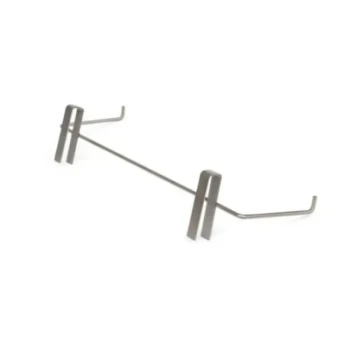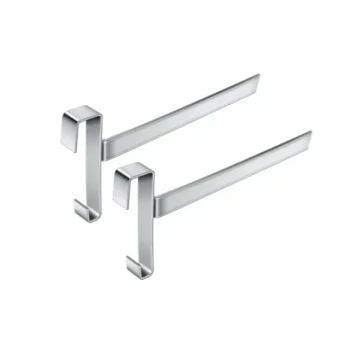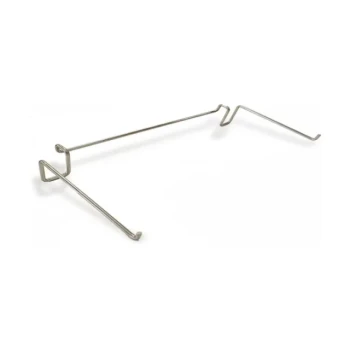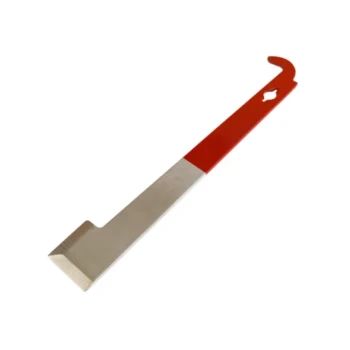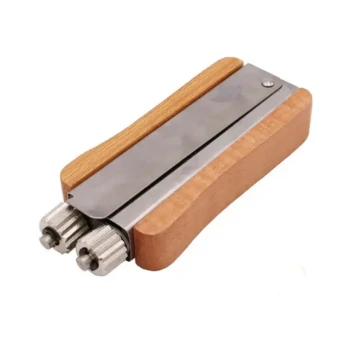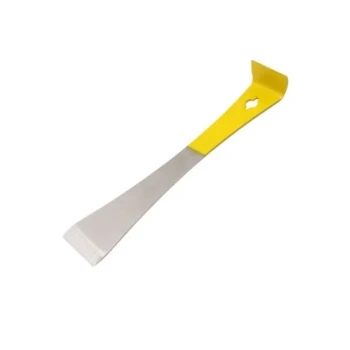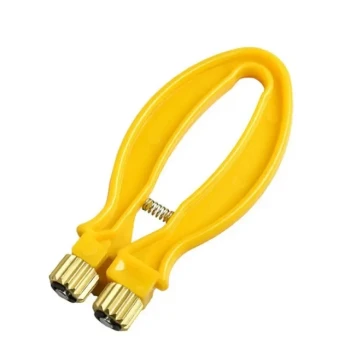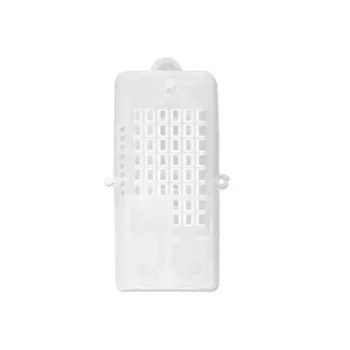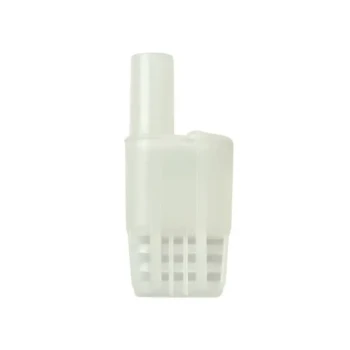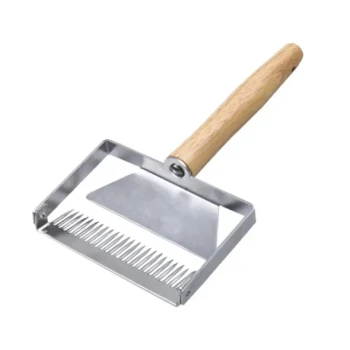A frame perch achieves its stability through a simple, yet highly effective, mechanical design. By fitting snugly over the edge of the hive body, its shape uses the hive wall itself as a stable anchor. This tight tolerance prevents the perch from slipping sideways or wobbling under the weight of the frames, creating a secure, temporary shelf for the beekeeper to work from.
The core principle is not just about a tight fit, but about converting the downward force of the frames into a stabilizing clamping force. This transforms a potentially precarious task into a controlled and predictable part of the hive inspection process.
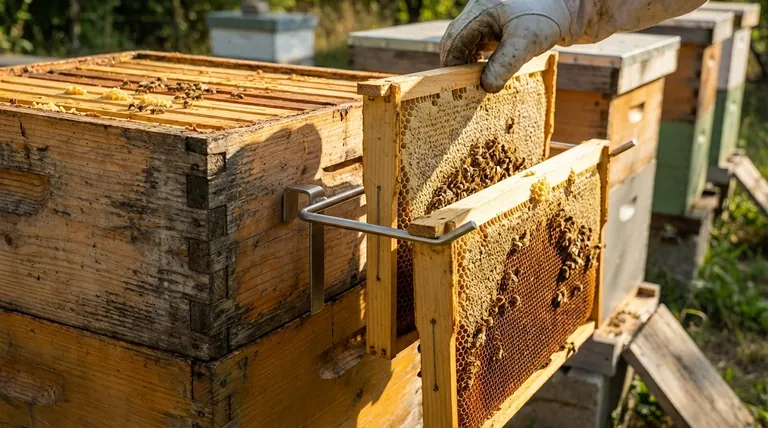
The Core Mechanics of a Stable Perch
To trust a tool, you must understand how it works. The frame perch relies on fundamental physics and purpose-driven design to provide a reliable platform during the delicate process of a hive inspection.
The Snug Fit and Leverage
The most critical design element is the channel or hook that goes over the hive wall. It is manufactured to precise dimensions that match standard hive bodies (e.g., Langstroth).
This snug fit eliminates lateral movement. As you place frames onto the perch, their weight creates a downward force that actually pulls the perch tighter against the hive body, increasing its stability through leverage.
Preventing Unwanted Movement
A beekeeper's hands must be steady. The perch's design ensures that it will not slip or wobble when frames are placed on it or removed.
This allows you to focus your full attention on the bees and the condition of the frame, rather than worrying about the security of your equipment. It removes a significant variable from the inspection process.
Understanding the Trade-offs and Limitations
While effective, a frame perch is not a universal solution. Its stability is conditional on proper use and selection, and understanding its limitations is key to using it safely.
Hive Compatibility is Key
A perch designed for a 10-frame Langstroth hive will be too loose and unstable on an 8-frame hive body. The "snug fit" is the source of its stability, and that requires a match between the tool and the hive.
Before purchasing, always verify that the perch is designed for the specific dimensions of your hive equipment.
Material and Build Quality
The stability of the perch is also dependent on the rigidity of its material. A perch made from thin, flimsy metal can bend under the weight of several frames full of honey.
Look for robust construction, such as thick-gauge stainless steel and strong welds. This ensures the tool itself does not become a point of failure.
The Risk of Overloading
Every tool has a practical limit. While a well-made perch can hold several frames, hanging an excessive number, especially those heavy with honey, can put undue stress on the tool and the hive box itself. It's a temporary holder, not a permanent storage rack.
Why Stability Matters During an Inspection
The stability of a frame perch is more than a convenience; it is a critical feature that directly impacts the health of the colony and the effectiveness of the beekeeper.
Minimizing Bee Disturbance
Unexpected movement, vibrations, or the sound of scraping metal can be perceived as a threat by the colony, increasing defensive behavior. A silent, motionless perch keeps the environment calm.
Protecting the Queen and Brood
The single greatest risk during an inspection is accidentally dropping a frame. This can kill dozens of bees, destroy brood, and potentially crush the queen. A stable perch provides the security needed to prevent this kind of catastrophic failure.
Creating an Efficient Workflow
By providing a safe, designated space to hang frames, the perch allows a beekeeper to work systematically. You can remove frames in order, inspect them, and return them without juggling them or setting them on the ground, leading to faster and more organized inspections.
Making the Right Choice for Your Apiary
Your goal for the inspection should guide your evaluation of this tool.
- If your primary focus is efficiency: A stable frame perch is a non-negotiable tool that streamlines your workflow and reduces inspection time.
- If your primary focus is bee safety: The secure fit of a quality perch is a direct investment in protecting your queen and brood from accidental drops.
- If your primary focus is versatility: Ensure any perch you consider is explicitly designed for the specific size and type of hive bodies you use in your apiary.
Ultimately, a well-designed frame perch transforms a precarious balancing act into a structured and safe procedure.
Summary Table:
| Key Factor | How It Ensures Stability |
|---|---|
| Snug Fit | Precise dimensions match the hive wall, eliminating lateral movement. |
| Leverage | Frame weight pulls the perch tighter against the hive, increasing stability. |
| Rigid Materials | Strong construction (e.g., stainless steel) prevents bending under load. |
| Proper Use | Correct hive compatibility and avoiding overload are essential for safety. |
Upgrade your apiary's safety and efficiency with HONESTBEE's professional-grade frame perches.
Designed for the rigorous demands of commercial beekeepers and equipment distributors, our perches are engineered from durable, thick-gauge materials to provide the ultimate stability during hive inspections. Protect your valuable queens and brood while streamlining your workflow.
Contact HONESTBEE today to discuss wholesale pricing and equip your operation with tools built for reliability.
Visual Guide
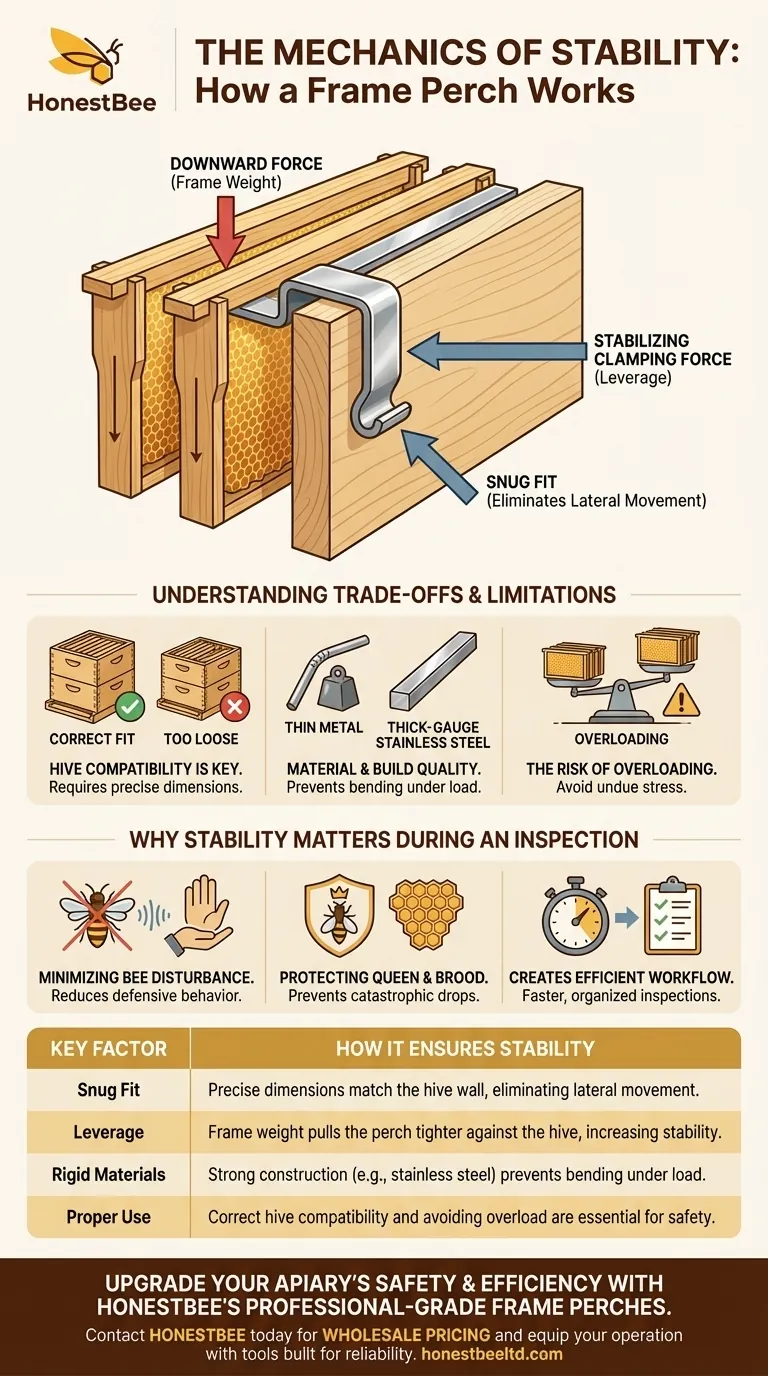
Related Products
- Heavy-Duty Stainless Steel Clip-On Frame Perch
- Heavy-Duty T-Style Frame Perch
- Heavy-Duty Stainless Steel Frame Perch
- Professional 3-Bar Frame Grip with Integrated Hive Tool
- HONESTBEE Professional Long Handled Hive Tool with Precision Cutting Blade
People Also Ask
- How does the beehive frame perch improve hive inspections? Boost Efficiency & Protect Your Hive
- What is the best place to keep bees? Find the Perfect Apiary Site for Your Hives
- What are the advantages of using a frame rest for the bees? Achieve Calmer, Safer Hive Inspections
- How many frames can the beehive frame perch hold? Organize Your Hive Inspections with Ease
- How does the frame rest benefit the beekeeper during hive inspections? Boost Efficiency & Protect Your Colony
